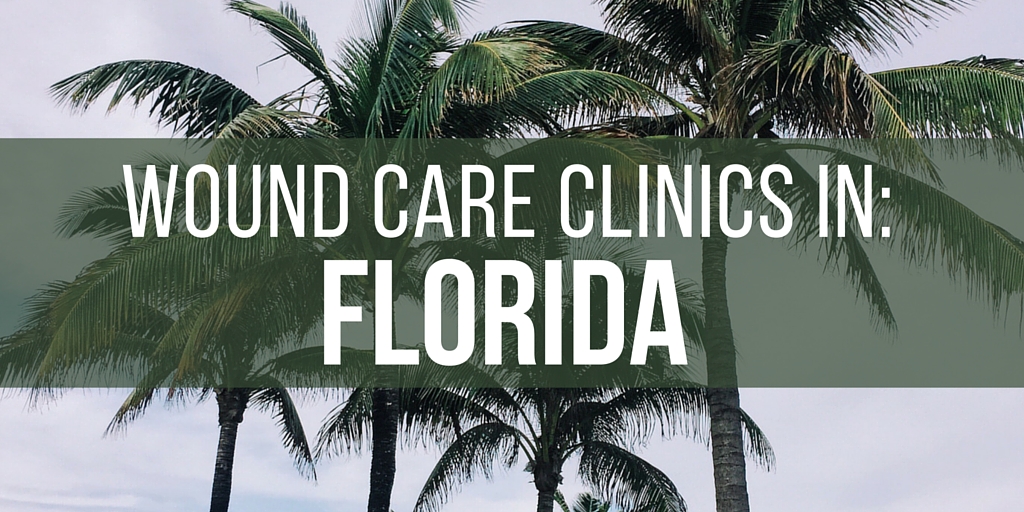Each and every year, somewhere between 3 and 5 million people suffer from chronic wounds caused by things such as poor circulation, diabetes, inadequate nutrition, traumatic injury, chronic disease, excess bacteria, and other conditions. So, if you have a wound that doesn’t seem to heal or respond to conventional treatments, don’t feel alone – it happens to many people.
While chronic wounds may not necessarily be rare, they still require attention as they can become an ongoing and serious medical issue. In the case that the body’s natural healing process seems inadequate, or altogether nonexistent, chronic wounds can lead to things like severe deterioration of the surrounding tissues, bad infections, gangrene, and even amputation in rare cases if it isn’t treated for properly.
So, if you have a non-healing wound, you should find a wound care clinic nearby so you can discuss what may be the best treatment plans with specially-trained medical experts.
While the doctors may recommend a certain treatment plan based on things such as your medical history, your wound, various medical tests and measurements, and your general health, it is important to understand the top forms of treatment for wound care. This way you will be able to better understand the doctors’ recommendations and ask any questions you may have.
For those who are not familiar with the different hyperbaric medicine services and wound treatments, here’s a guide to help provide you with a rundown of the top services and treatments for wound care:
Infection Control/Antibiotic Therapy
Antibiotic therapy deals with infection control and management while limiting and healing the effects of the infection. Infection control typically requires a multidisciplinary approach. Infection control itself focuses on three steps.
1. Optimize host response, which means enhancing the tissue oxygenation, minimizing risk factors for infection, maximizing nutritional status, ensuring hydration, and treating the infection and its roots.
2. Reducing bacterial load by preventing future wound contamination, managing wound drainage if needed, optimizing the wound bed, which usually involves some degree of debridement, and antibiotic therapy, which we will explain shortly.
3. Then, thirdly, take general measures to manage the infection such as manage any systemic symptoms (pain), provide careful instruction for patient, ensure cooperation and support if the patient needs it.
In addition to infection control, antibiotic therapy is almost always necessary in conjunction with the control measures. Antibiotics and antiseptics act directly on the micro-organisms causing the problems and systems.
Antiseptics are applied topically and they prevent the cells from multiply and sometimes kill the cells in a non-selective manner, whereas antibiotics should be taken orally and they will act selectively against bacteria killing the infection.
Debridement
As the body goes through its natural healing process, it’s possible that the wound area can become overrun with dead tissue and skin cells. This inhibits the body’s ability to heal naturally as it restricts the development of new and healthy cells while also increasing the likelihood of infection.
Debridement helps the wound healing process by removing the necrotic material (dead cells). Debridement can occur in a few ways:
1. Autolytic debridement, which involves applying hydrocolloids and hydrogels to the affected area to increase the moisture so the body can naturally shed off the dead material.
2. Surgical Debridement and sharp debridement, which involve the manual removal of the material by a wound care specialist by using a scalpel and forceps (or scissors for sharp debridement).
3. Larval therapy, which involves the placement of maggots or their larvae direct on the affected area to allow them the ability to eat away at the dead material ultimately leaving behind healthy tissue.
Compression Therapy
One of the simpler forms of wound treatment, compression therapy, is typically recommended for patient’s suffering from chronic venous disease or chronic leg ulcers, and occasionally for individuals suffering from diabetic wounds. Compression therapy works relatively simply.
Since wound healing is primarily dependent on blood flow, compression therapy helps the body’s healing process become effective again by increasing blood flow. By applying controlled pressure to surface veins (most typically on the legs) and keeping the diameter small and tight, you can force the blood back to the heart through the deep vein system. This ultimately improves overall circulation, which means better blood flow to the wounded area leading to decreased swelling and more effective healing.
Platelet Rich Plasma
Platelet rich plasma, or PRP, is frequently used to help a patient’s wound heal once the more conventional treatments fail to become effective. PRP is an autologous blood therapy that stimulates a healing response using the patient’s own blood. The body’s normal healing processes depend on blood flow, but people with chronic wounds often have diminished blood flow, which creates problems for healing.
Using advanced technology to sort of isolate and concentrate platelets from the patient’s blood, wound care doctors can initiate the standard healing process and then expedite it by increasing the concentration of the platelets by 4-7 times. Then, PRP provides a very strong delivery of growth factors to the area surrounding the injury which can dramatically improve the healing process.
Hyperbaric Oxygen Therapy
When patient’s wounds don’t respond to the conventional treatments, they might be recommended to undergo hyperbaric oxygen therapy, or HBOT. HBOT utilizes advanced technology that speeds up and even triggers the body’s healing mechanisms. It does so by providing the patient with 100% oxygen in a chamber with air pressure twice as high as normal.
By taking in such highly-concentrated oxygen for brief periods of time, patients often experience very effective results that include benefits such as the delivery of oxygen to oxygen-starved tissue near the injury, increased abilities for your white blood cells to fight against infection, and an improved ability for your body to begin repairing and replacing the cells in the damaged area.
At the end of the day, it is important to be on the same page as your doctors and wound care specialist in order to ensure the best care for your wound. Of course, there are many various treatment plans, and sometimes treatment plans can be coupled together. For instance, most treatments are coupled with diabetic education and medical nutrition information and guides.
It is important to keep in mind that you will most likely have your progress monitored by a health professional, so if you end up having any questions or concerns about your wound or your treatment, don’t hesitate to ask!









